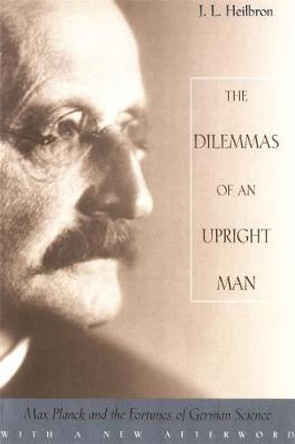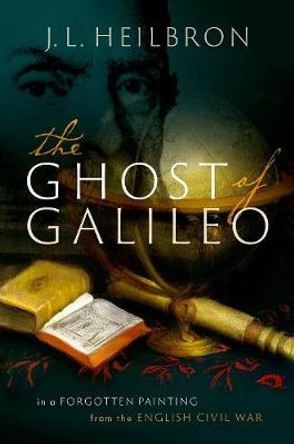Description
Between 1650 and 1750, four Catholic churches were the best solar observatories in the world. Built to fix an unquestionable date for Easter, they also housed instruments that threw light on the disputed geometry of the solar system, and so, within sight of the altar, subverted Church doctrine about the order of the universe.
A tale of politically canny astronomers and cardinals with a taste for mathematics, The Sun in the Church tells how these observatories came to be, how they worked, and what they accomplished. It describes Galileo's political overreaching, his subsequent trial for heresy, and his slow and steady rehabilitation in the eyes of the Catholic Church. And it offers an enlightening perspective on astronomy, Church history, and religious architecture, as well as an analysis of measurements testing the limits of attainable accuracy, undertaken with rudimentary means and extraordinary zeal. Above all, the book illuminates the niches protected and financed by the Catholic Church in which science and mathematics thrived.
Superbly written, The Sun in the Church provides a magnificent corrective to long-standing oversimplified accounts of the hostility between science and religion.
A New York Times Book Review Notable Book of the Year, 1999.
About the Author
J. L. Heilbron, formerly Professor of History and the Vice Chancellor at the University of California, Berkeley, is a Senior Research Fellow at Worcester College, University of Oxford. He was awarded the George Sarton Medal by the History of Science Society in 1993 for his contributions to the field.
Reviews
[The] improbable tale [of an astrological instrument saving a church] is just one of the gems recovered by Heilbron in a book that lingers lovingly over these forgotten instruments. Once big science, now architectural curios not infrequently buried under flagstones and pews, gnomons (or meridian lines, as they are more properly called) lie at the luminous conjunction of mathematics, philosophy, architecture, astronomy and church politics. Dusted off in this idiosyncratic history of astronomy during the scientific revolution, they provide an occasion to revisit perennial questions about the relationship between science and religion, reason and faith...[Readers] will be surprised to discover what Heilbron shows: that the Catholic Church served as perhaps the largest patron of sophisticated astronomical research throughout the controversies over Copernicus and his sun-centered scheme. -- D. Graham Burnett * New York Times Book Review *
Dr. Heilbron reveals the ubiquity of the solar observatories, which heretofore were little known among scholars. And he shows that the church was not necessarily seeking knowledge for knowledge's sake, a traditional aim of pure science. Rather, like many patrons, it wanted something practical in return for its investments: mainly the improvement of the calendar so church officials could more accurately establish the date of Easter. -- William J. Broad * New York Times *
A book both elegant and learned, exploring the installation of vast (but often easily overlooked) astronomical instruments in major churches by authorities sometimes thought, wrongly, to have opposed astronomical research. * New York Times Book Review *
In this elegant work, Heilbron recounts how in the seventeenth and eighteenth centuries the Roman Catholic Church fashioned several of its major cathedrals into precision instruments for studying the motions of the sun. The aim was to determine the time between vernal equinoxes, so that the dates for Easter could be forecast accurately...Heilbron, upending common views of the Church's relationship to science after it condemned Galileo, shows that Rome handsomely supported astronomical studies, accepting the Copernican hypothesis as a fiction convenient for calculation. * New Yorker *
Heilbron's book tells of the struggle to determine dates more accurately, including a little-known aspect of the history of the calendar--the use of churches as giant sundials to make astronomical measurements. -- Kate Noble * Time *
The historical perception of post-Renaissance Italian astronomy has become so over-charged with the Roman Catholic Church's condemnation of Galileo in 1633 that it is commonly assumed that no significant science took place south of the Alps until the 19th century. But, as John Heilbron's learned, elegant and finely phrased book reminds us, this was not the case...Though Heilbron supplies all the necessary geometry to demonstrate how the meridianae [(a solar measuring instrument)] were constructed and used within the great architectural masterpieces into which they were incorporated, his book is arranged and illustrated in such a way that non-mathematical persons can enjoy it. -- Allan Chapman * Times Higher Education Supplement *
John Heilbron's book does tell a gripping story and with a splendid literary flair...By subtly inserting critical comments, the author evaluates the interactions of science in its gestation with the culture of those centuries and the repercussions that these interactions have has down to our own times. And so it becomes a story about people, and Heilbron tells it in a masterfully human way. -- George V. Coyne * Nature *
In The Sun in the Church, historian John Heilbron argues convincingly that long-held interpretations [in astronomy] are too simplistic and must be revised...Heilbron tells an important story, one that is not so much neglected as unknown among historians of science. Even in histories of astronomy, there is usually only a passing reference to it. -- Albert Van Helden * Science *
The spectacle of the image of the sun projected on meridian lines in several of the great Italian cathedrals is captured in the beautiful color plates highlighting this book...This excellent book explains the difficulties posed by the inconvenient lengths of the lunar month and solar year, and discusses how observations of the solar image crossing a precisely aligned mark could solve the problem...The book is well written. -- D. E. Hogg * Choice *
Heilbron chronicles the ironic relationship between astronomy and the Catholic Church as it seeks the means to determine [the date for Easter]. This is the story of politically astute astronomers and cardinals who have to reconcile church doctrine with Galileo's universe...The text is filled with fine detail and is richly illustrated. An erudite and scholarly work. -- James Olson * Library Journal *
J. L. Heilbron depicts the unusual intersection of architecture, science, ecclesiastical and civil history, mathematics and philosophy that led the church to construct the buildings only a few years after it martyred Galileo. Erudite, accessible and wryly humorous, Heilbron's engaging book is a first-rate work of science history. * Publishers Weekly *
A fascinating history of astronomy that shows, as no other work has done so well, what happened to Italian science after Galileo's trial. An astonishing display of erudition and linguistic control, with a wealth of fine details, this is a major history that carves out a unique territory. -- Owen Gingerich, Harvard University
The innumerate reader will learn much from Heilbron's book, and may come away with a different appreciation of the stars above us. -- Ingrid D. Rowland * New York Review of Books *
He tells his story in rich detail, reconstructing characters and circumstances with ironic verve. His theme is the meridian lines (meridianae) laid down in the marble floors of cathedrals for quantifying the sun's annual motion... Heilbron's book is a treasure trove of fascinating information. -- Curtis Wilson * Isis *
This excellent book adds a welcome complexity to the historiography of astronomy in the years after Galileo's abjuration allegedly brought Italian astronomy to its knees Heilbron's book also reinterprets the relations of science and religion in the shadow of the Galileo affair. The novelty of his argument is neither that religion can stimulate astronomy nor that ecclesiastical patronage encouraged learning It is rather that the Church signally fertilized astronomy in an era when most historians portray the two as antagonists [one] will appreciate the witty prose of the argument and the elegant design of this important book. -- Michael H. Shank * Renaissance Quarterly *
The Sun in the Church: Cathedrals as Solar Observatories is a historical, well-documented, scholarly book concerned both with the use of churches in Italy during the 16th and 18th centuries to obtain observations of the sun for calendric and scientific purposes and with the relationship between the Church of Rome and the heliocentric views of many of the scientists of those times. -- Arnold M. Heiser * Science Books and Films *
Heilbron combines the history of astronomy, mathematics, architecture, patronage, and religion to tell a story that very much alters the common picture of the progress in astronomy in the early modern period and the place of the Catholic Church in that history. The story is well told, and the mathematics is given in a way that could discourage only the most innumerate. -- Sheila J. Rabin * The Sixteenth Century Journal *
J. L. Heilbron's remarkable book draws our attention to church users of a very different kind: early modern astronomers measuring the solar path to correct the shift of the ancient Julian calendar The Sun in the Church tells their history in detail, alongside an exceptionally comprehensive and clear account of medieval and early modern astronomy The Sun in the Church is an illuminous book, possibly as durable as the meridianae it celebrates. -- Sergio Sanabria * Technology and Culture *
This book offers a different kind of travel guide for the 'mathematical tourist,' providing an itinerary of Italian cities and churches in which to find meridians, analemmas, armillary spheres and gnomons. These are good reminders of the role of the church in the history of science and testify to the fact that everything applied to the church, even the most apparently ornamental, served a didactic purpose. -- Paul A. Calter and Kim Williams * Nexus Network Journal *
Awards
Winner of Pfizer Award 2001. Nominated for Don K. Price Award 2001 and Sally Hacker Prize 2001 and Dexter Prize 2001 and Watson Davis and Helen Miles Davis Prize 2001 and Robert K. Merton Book Award 2004.
Book Information
ISBN 9780674005365
Author J. L. Heilbron
Format Paperback
Page Count 384
Imprint Harvard University Press
Publisher Harvard University Press
Weight(grams) 748g






